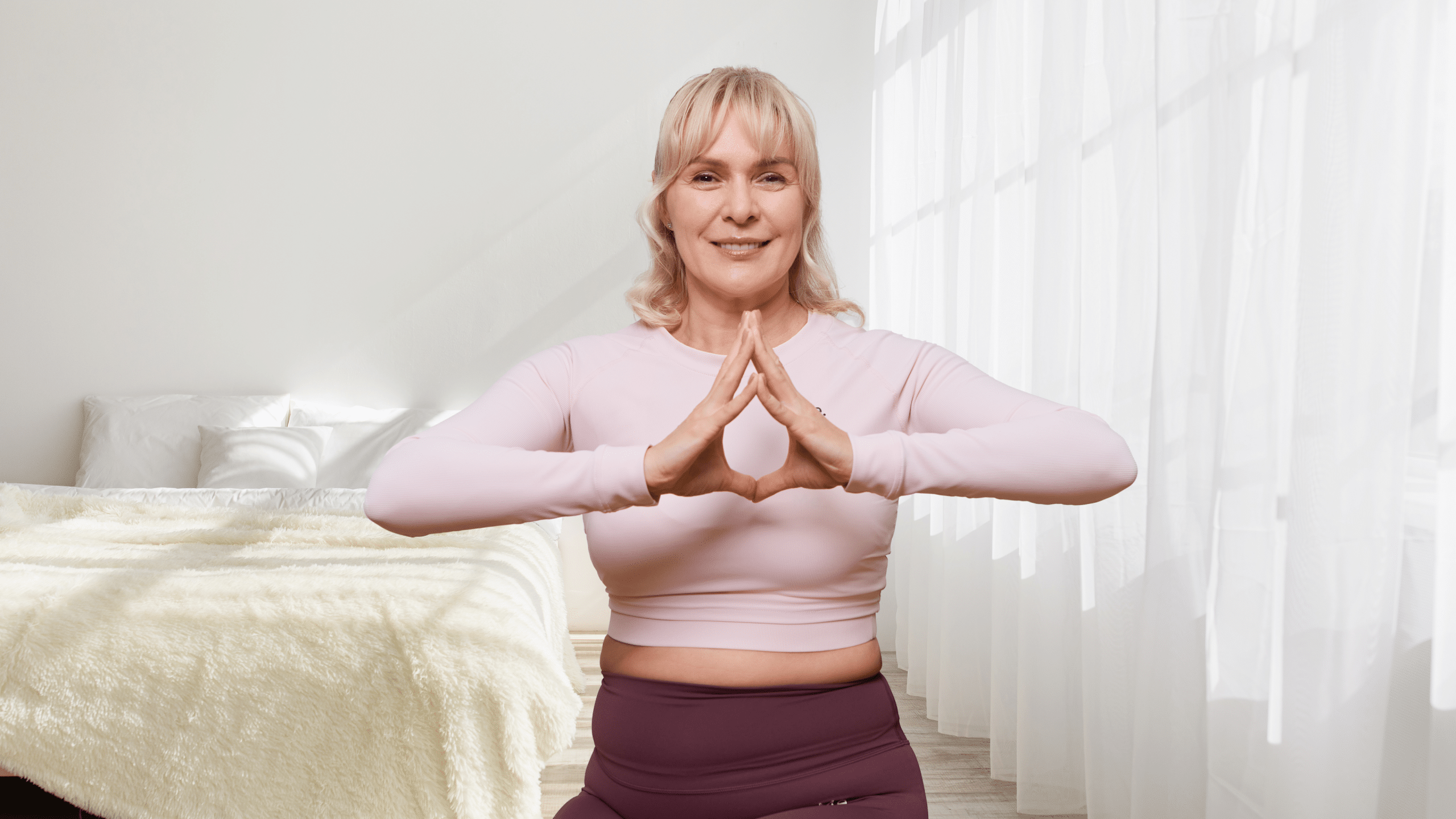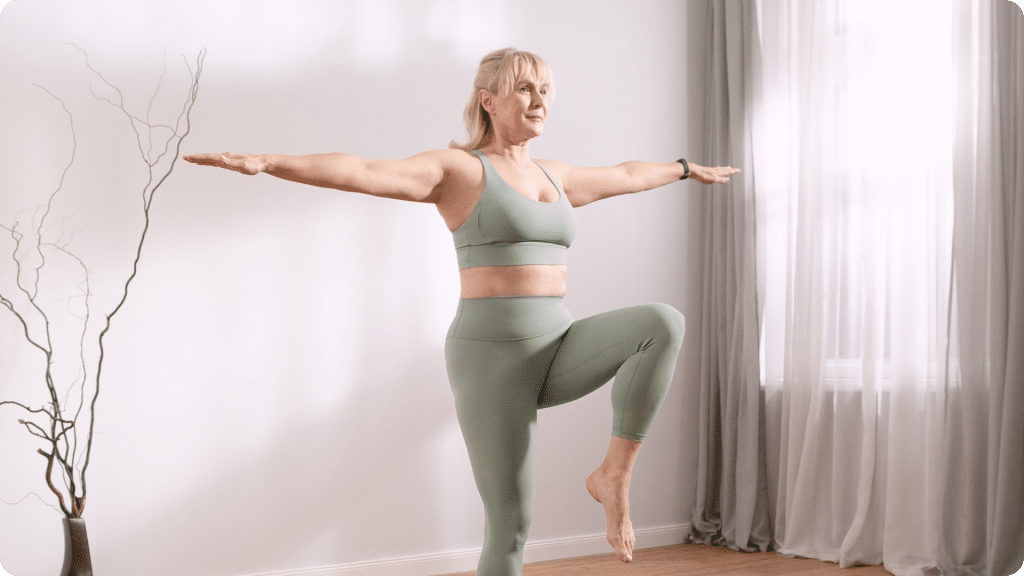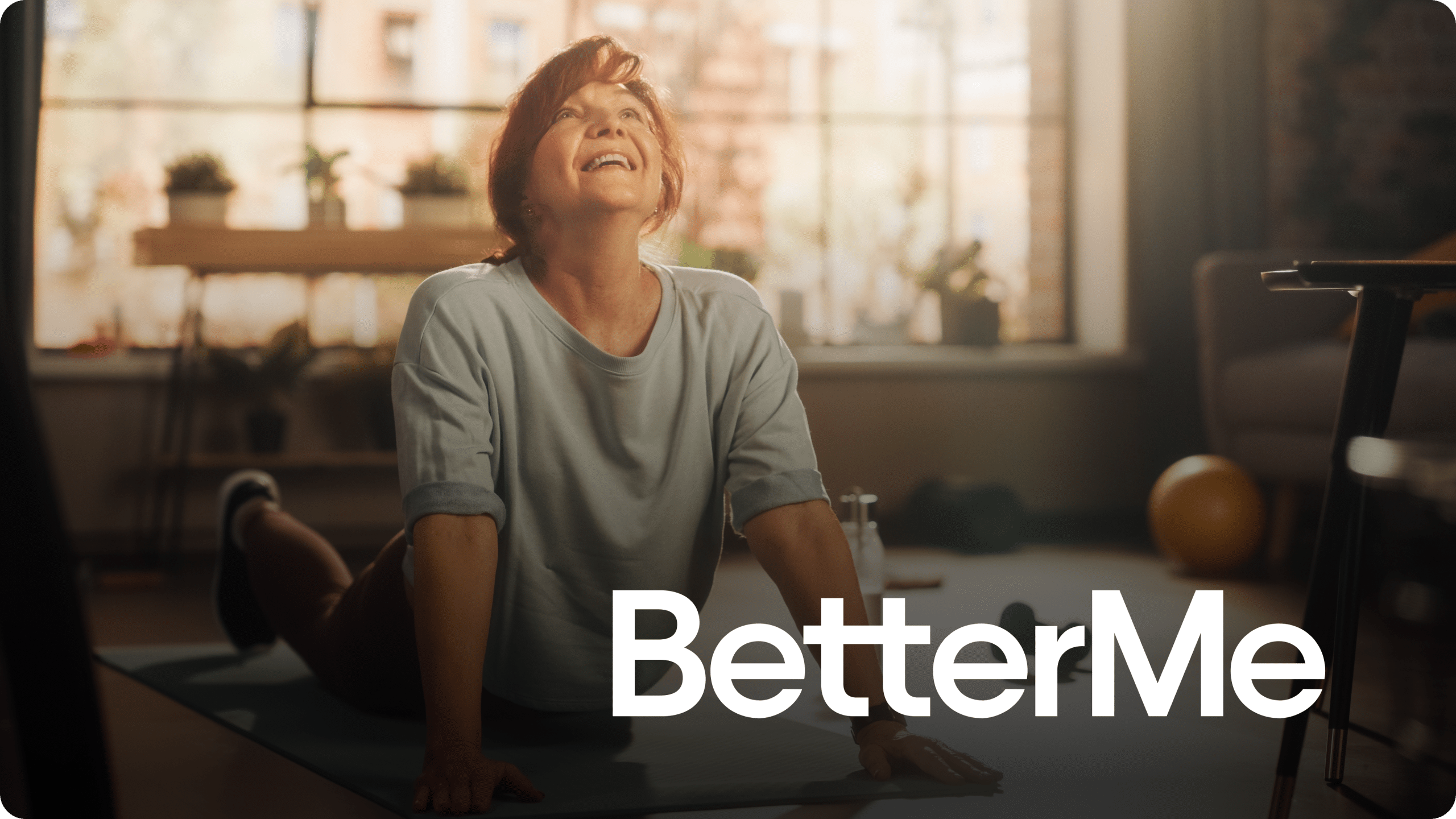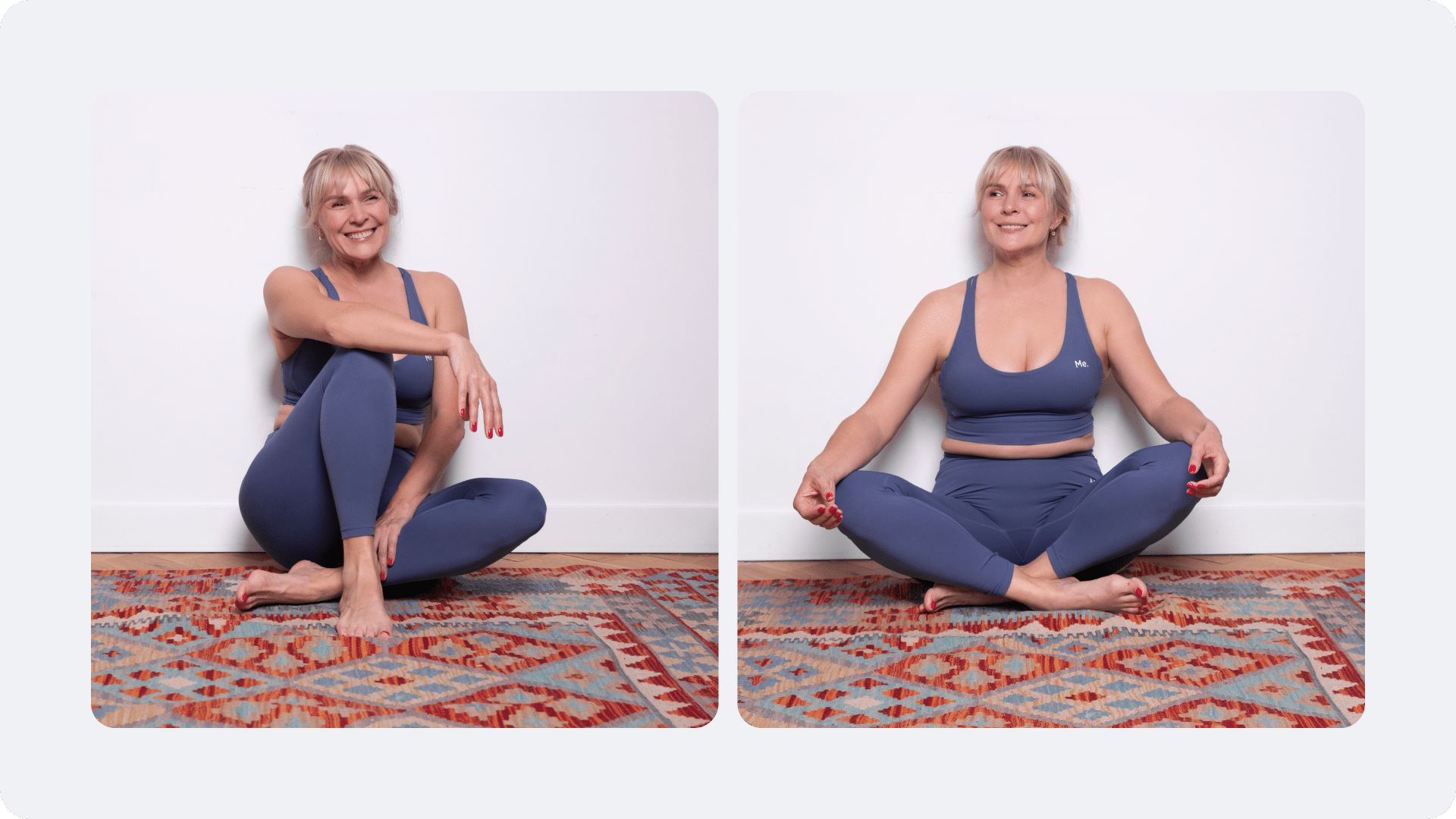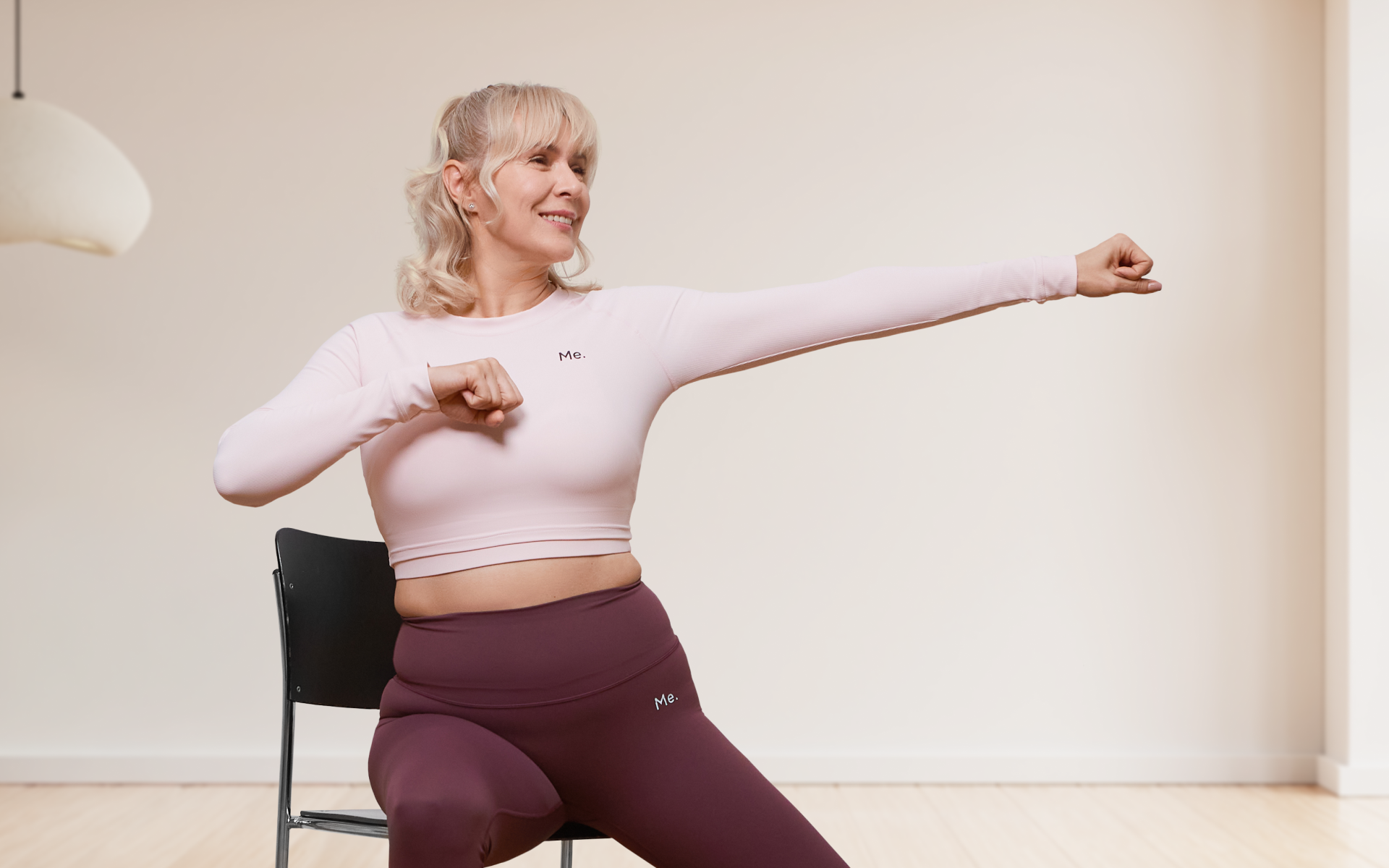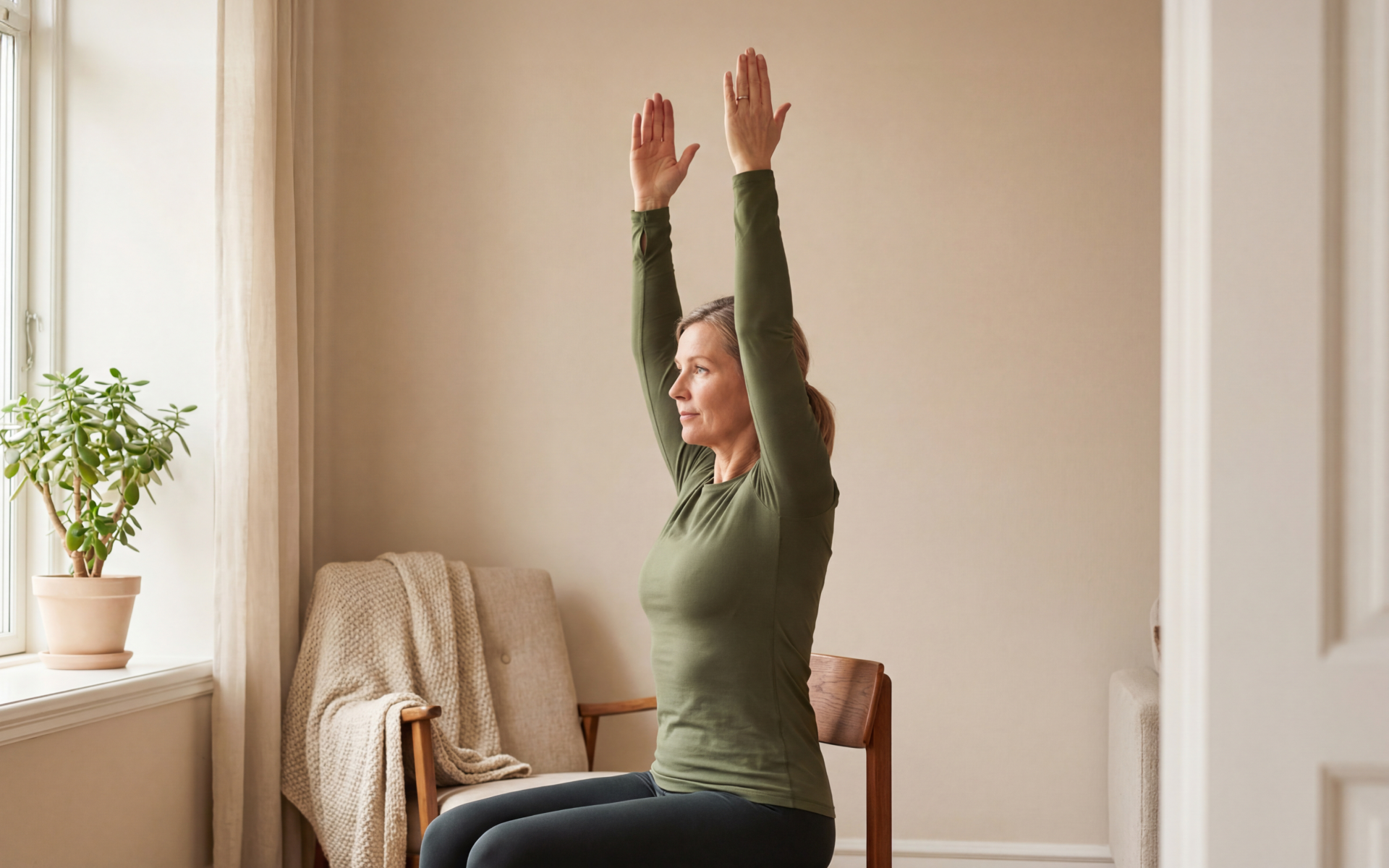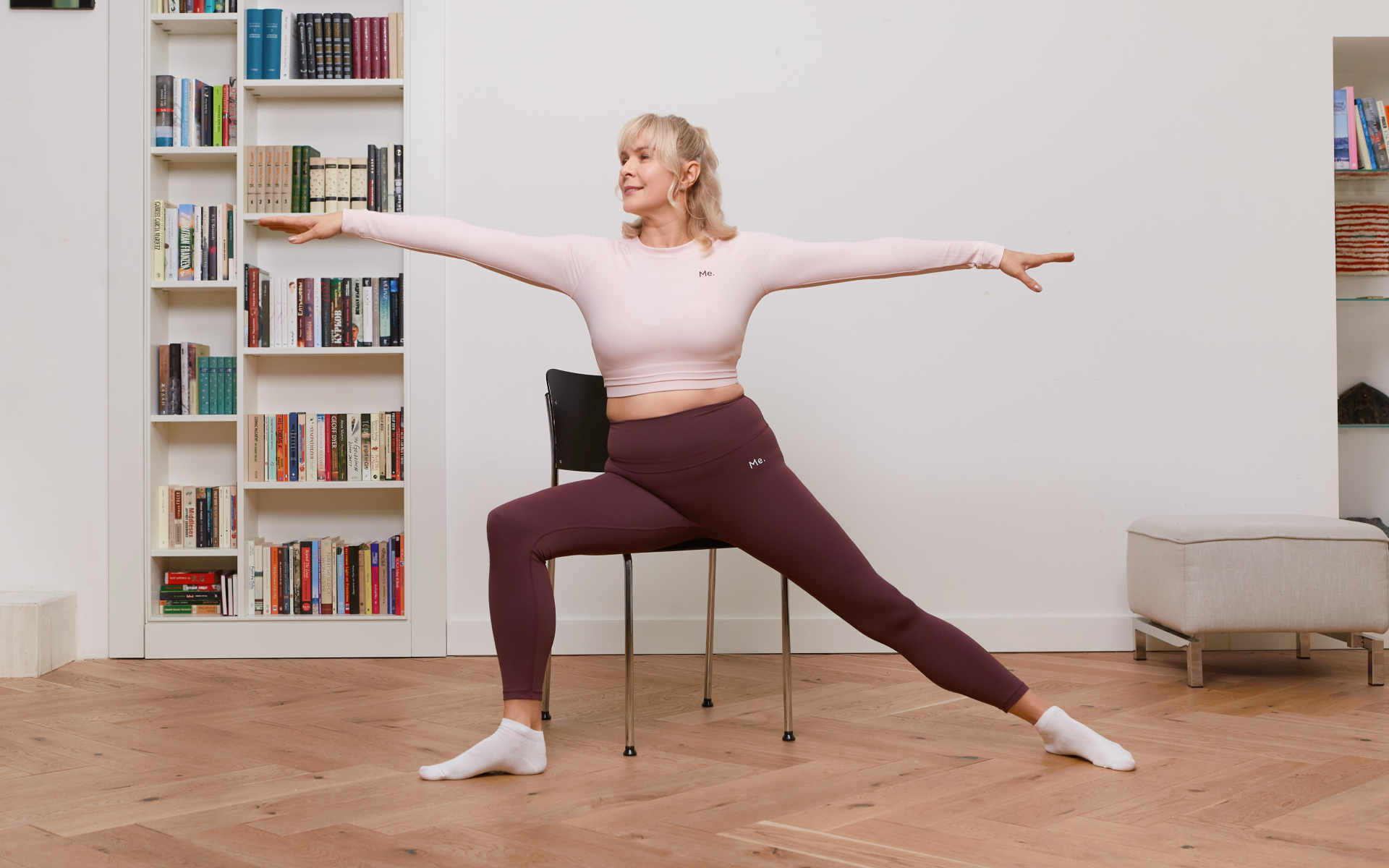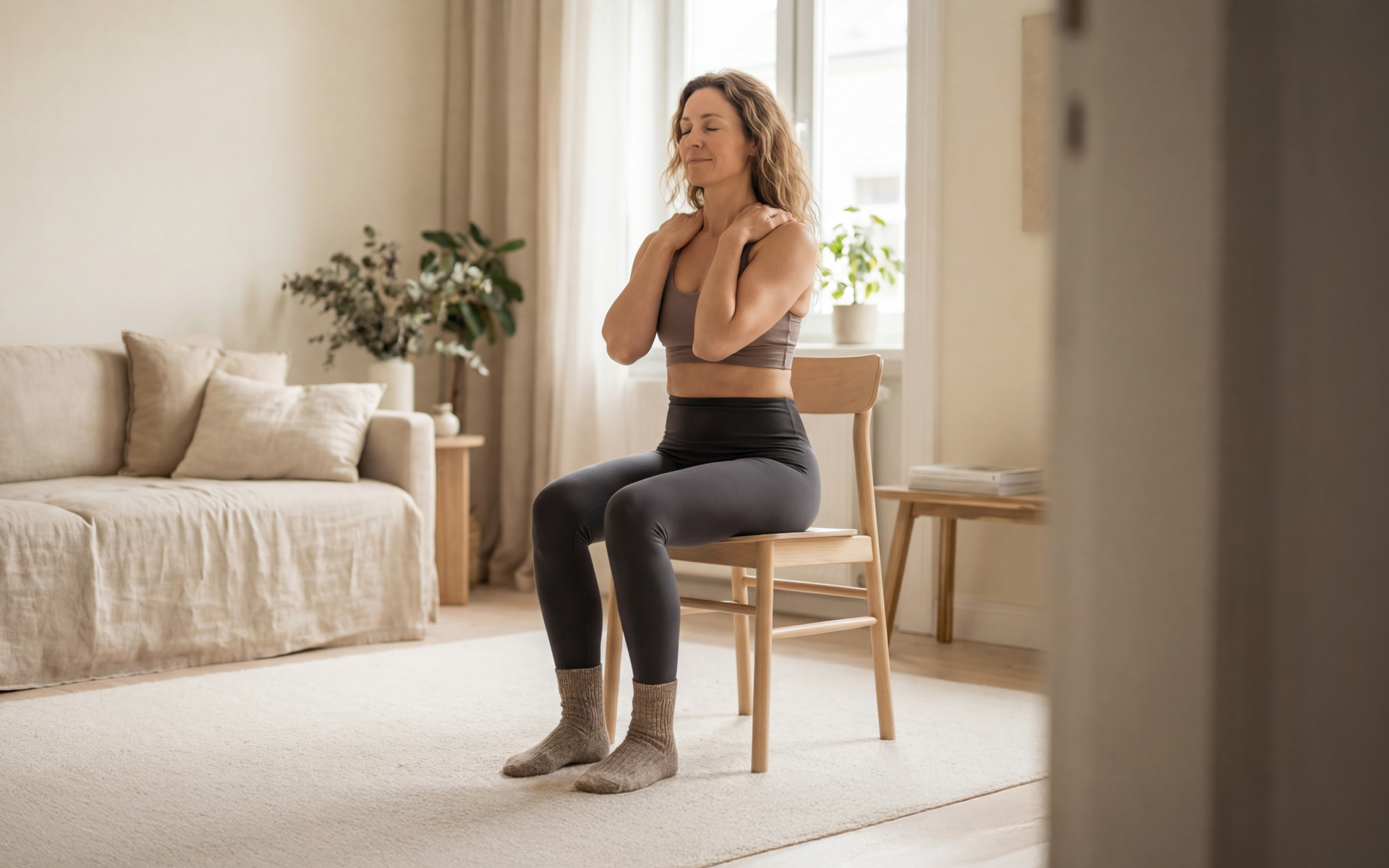Everyone can benefit from a yoga practice. At its core, yoga is about connecting your mind, body, and spirit. However, for many people with disabilities or limited mobility, traditional yoga classes may not be accessible. They may feel intimidated or unable to participate due to physical limitations. This is where adaptive yoga comes in, as it makes the practice accessible for everyone.
As the name implies, adaptive yoga allows any individual to participate in this highly effective practice, regardless of their physical abilities or limitations. It is adaptable, inclusive, and provides a wide array of mental and physical benefits.
Are you unsure whether adaptive yoga is right for you? Are you wondering how it differs from traditional yoga? Read on to learn more about adaptive yoga and its benefits.
What Is Adaptive Yoga?
Adaptive yoga is a modified form of yoga that makes the practice more accessible for people with physical limitations, chronic illnesses, injuries, or disabilities (1).
It involves modifications to traditional poses and using props to accommodate individual needs. These modifications allow individuals with various limitations to experience the benefits of a yoga practice.
In an adaptive yoga class, the instructor will work closely with each person to understand their specific needs and make appropriate adjustments. This may include using chairs, blocks, straps, or other props to support different body parts, modifying poses, or even creating entirely new poses tailored to an individual’s abilities.
Adaptive yoga isn’t limited to instruction in a studio setting. It can also be done at home with the help of a caregiver or loved one. The key is to modify and adapt the practice to suit the individual’s needs and abilities.
Read more: Top 4 Benefits of Somatic Yoga
The Philosophy Behind Adaptive Yoga
Yoga should be inclusive and accessible to everyone, regardless of their physical limitations. Adaptive yoga focuses on the individual’s abilities rather than disabilities, which promotes self-acceptance and self-love.
Adaptive yoga also emphasizes the importance of creating a safe and supportive environment for all participants. Instructors create an atmosphere of acceptance, understanding, and non-judgment, which allows individuals to explore their practice without fear or limitations.
Why Is Inclusivity Important in Yoga?
Inclusivity in yoga is essential as it allows individuals with varying abilities to access the practice and experience its benefits (2). Everyone deserves the opportunity to connect their mind, body, and spirit through yoga.
Moreover, inclusivity promotes diversity within the yoga community and breaks down barriers that may prevent some individuals from feeling welcome or comfortable in traditional classes. It is a more diverse and accepting space for all practitioners.
Who Can Benefit from Adaptive Yoga?
Adaptive yoga is beneficial for individuals with a wide range of abilities and limitations, including:
- People with physical disabilities
- Individuals who are recovering from injuries or surgeries
- Those with chronic illnesses
- Seniors who may have limited mobility or balance issues
- Pregnant women who are looking for a safe and gentle practice
In short, anyone who desires the benefits of yoga but feels limited in a traditional class can benefit from adaptive yoga.
Those mentioned above should consult a doctor before they start any exercise program, including adaptive yoga. As with any form of exercise, adaptive yoga can have risks. However, when it’s done correctly and with appropriate modifications, the benefits far outweigh any potential risks.
How Is Adaptive Yoga Different from Traditional Yoga?
While the goal of both traditional and adaptive yoga is to connect the mind and body, there are some key differences between the two practices. Traditional yoga classes often focus on achieving a specific pose or sequence of poses, while adaptive yoga prioritizes finding what works best for each individual.
In addition, traditional yoga may involve more physically challenging poses and movements, while adaptive yoga focuses on creating modifications that work with an individual’s abilities. In adaptive yoga, there is also more emphasis on the use of props to support different body parts and make the practice more accessible.
Reasons why BetterMe is a safe bet: a wide range of calorie-blasting workouts, finger-licking recipes, 24/7 support, challenges that’ll keep you on your best game, and that just scratches the surface! Start using our app and watch the magic happen.
Benefits of Adaptive Yoga
Adaptive yoga offers many potential benefits for individuals with physical limitations or disabilities. Some of these include:
1. Increased Flexibility and Mobility
By adapting the practice to accommodate individual needs, adaptive yoga can help improve flexibility and mobility for those with physical limitations. This can lead to increased range of motion and a better quality of life (3).
2. Reduced Stress and Anxiety
Yoga is known for its relaxation benefits and this holds true for adaptive yoga too. The practice incorporates breathing techniques and mindfulness that can help reduce stress and anxiety levels (4).
3. Improved Balance and Coordination
Adaptive yoga uses props to support different body parts, which allows individuals with balance or coordination issues to safely participate in the practice. Over time, this can lead to improved balance and coordination skills (4).
4. Increased Mind-Body Connection
Adaptive yoga focuses on finding what works best for each individual, promoting a deeper mind-body connection (4). This can lead to increased self-awareness, acceptance, and confidence.
5. Community and Support
Practicing adaptive yoga allows individuals with various limitations to connect with others who understand their struggles and challenges. It creates a sense of community and support that can be incredibly beneficial for overall well-being.
Common Types of Adaptive Yoga
Chair yoga, senior yoga, and yoga for people with disabilities are some common types of adaptive yoga. These practices use chairs, props, and modifications to accommodate different abilities and limitations.
Chair Yoga
Who is it for?
Chair yoga is designed for individuals with limited mobility, seniors, or those who are recovering from surgery and who may find it challenging to sit on the floor.
How does it work?
This practice utilizes a sturdy chair as a tool, allowing participants to perform poses while seated, ensuring safety and comfort. By modifying traditional poses, practitioners can engage in yoga without the need to get up and down from the floor.
Exercise examples:
- Seated forward bends for stretching the back and legs
- Wrist and arm stretches to improve flexibility
- Gentle twists to enhance spinal mobility
Yoga for People with Disabilities
Who is it for?
This form of yoga is specifically created for individuals with physical disabilities, including those with paralysis, amputations, or developmental disabilities.
How does it work?
Yoga for people with disabilities incorporates specific modifications and props that are tailored to each individual’s ability, ensuring everyone can participate fully. Instructors often work one-on-one to guide students through personalized practices.
Exercise examples:
- Supported downward dog using a wall or chair
- Hero pose with blankets for added support
- Gentle stretching using resistance bands
Try this Yoga for disabilities routine for an effective low-impact workout.
Yoga for Seniors
Who is it for?
Yoga for seniors caters to older adults who are looking to maintain flexibility, strength, and balance as they age.
How does it work?
This practice often involves gentler movements and restorative poses, with a focus on safety and alignment. Classes may integrate props such as blocks, straps, and chairs to help people execute poses comfortably.
Exercise examples:
- Cat-cow pose to promote spinal flexibility
- Tree pose for strengthening balance
- Legs-up-the-wall for relaxation and improved circulation
We’ve discussed more yoga poses for you in our Yoga for seniors blog.
Practical Adaptive Yoga Sequence Example
While every adaptive yoga sequence will be unique to the individual, here’s a sample chair yoga sequence that incorporates some common poses and modifications:
- Seated Cat-Cow Pose: Start by sitting on the edge of a chair with your feet flat on the ground and your hands resting on your thighs. Inhale, arch your back, and look up toward the ceiling (cow pose). As you exhale, round your spine and bring your chin to your chest (cat pose). Repeat 5-10 times.
- Supported Forward Fold: Sit tall in the chair with your feet hip-width apart. Fold forward from the hips, placing your forearms on your thighs for support. Hold for a few deep breaths to stretch the back and hamstrings.
- Chair Twist: Sit tall in the chair with your feet flat on the ground. Place your right hand on the outside of your left knee and gently twist to the left, using your core for support. Hold for a few breaths and then switch sides.
- Seated Warrior I: Start in a seated position with your feet hip-width apart. Cross your right ankle over your left thigh and flex your foot to protect your knee. Press down through the right foot as you lengthen through the spine, bringing your arms overhead (warrior arms). Hold for a few breaths and then switch sides.
- Supported Downward-Facing Dog: Stand facing a wall with hands shoulder-width apart on the wall at chest height. Step back to form an L-shape with your body, keeping your feet hip-width apart. Press into the wall to stretch the back and shoulders.
- Seated Savasana: End the sequence by returning to a seated position with eyes closed, focusing on deep breathing and relaxation for a few minutes.
FAQs
What is the best way to start practicing adaptive yoga?
The best way to start practicing adaptive yoga is to find a class or instructor that specializes in this form of yoga. Look for classes that emphasize inclusivity and have instructors who are experienced in working with individuals with various physical limitations. If attending a class isn’t possible, consider using online resources or working with a caregiver to practice at home.
Can anyone practice adaptive yoga regardless of age or fitness level?
Yes, anyone can practice adaptive yoga regardless of age or fitness level. This style of yoga is designed to be inclusive, which makes it accessible to people with physical disabilities, chronic illnesses, injuries, or limited mobility (1).
Adaptive yoga tailors poses and uses props to accommodate each individual’s needs, ensuring everyone can participate and benefit from the practice. However, it’s always advisable to consult a healthcare professional before you start any new exercise program.
We discussed Yoga for limited mobility and how to create a working routine in our previous blog.
How does adaptive yoga differ from other forms of yoga?
Adaptive yoga differs from traditional forms of yoga in its approach to poses and practice. While traditional yoga often focuses on achieving specific poses, adaptive yoga prioritizes modifying poses to suit each individual’s abilities.
It emphasizes the use of props and supports to make the practice accessible and safe for everyone. The goal is to find what works best for each person, promoting self-acceptance and inclusivity, rather than striving for perfection in poses.
What should I expect from an adaptive yoga class?
In an adaptive yoga class, you can expect a supportive and non-judgmental environment where the instructor works closely with participants to understand their individual needs. Classes typically involve modifications to traditional yoga poses, using props such as chairs, blocks, and straps to help with the practice.
The focus is on safety, comfort, and adapting the practice to suit the capabilities of each participant. Expect a slower pace, with an emphasis on mindfulness and breathing techniques.
How often should I practice adaptive yoga?
Practicing two to three times a week can yield significant benefits, including improved flexibility, reduced stress, and enhanced balance. However, it’s important to listen to your body and adjust the frequency as required. Consistency is key, so finding a routine that is sustainable and enjoyable will ensure the most benefits over time.
Conclusion
Adaptive yoga is a modified form of yoga that makes the practice more accessible and inclusive for individuals with physical limitations or disabilities. It promotes self-acceptance, inclusivity, and community within the yoga world.
With its many potential benefits, adaptive yoga has the power to transform and enrich the lives of those who may feel excluded from traditional yoga classes. Everyone deserves the opportunity to experience the mind-body connection and inner peace that yoga can bring, regardless of their abilities.
DISCLAIMER:
This article is intended for general informational purposes only and does not serve to address individual circumstances. It is not a substitute for professional advice or help and should not be relied on for making any kind of decision-making. Any action taken as a direct or indirect result of the information in this article is entirely at your own risk and is your sole responsibility.
BetterMe, its content staff, and its medical advisors accept no responsibility for inaccuracies, errors, misstatements, inconsistencies, or omissions and specifically disclaim any liability, loss or risk, personal, professional or otherwise, which may be incurred as a consequence, directly or indirectly, of the use and/or application of any content.
You should always seek the advice of your physician or other qualified health provider with any questions you may have regarding a medical condition or your specific situation. Never disregard professional medical advice or delay seeking it because of BetterMe content. If you suspect or think you may have a medical emergency, call your doctor.
SOURCES:
- What is adaptive yoga? (2024,us.humankinetics.com)
- Adaptive yoga versus low-impact exercise for adults with chronic acquired brain injury: a pilot randomized control trial protocol (2023,frontiersin.org)
- Effect of Yoga of Adaptive Yogasana Practice on the Flexibility and Psychomotor Variables in Intellectually Disabled Subjects (2024,nih.gov)
- Adapted yoga to improve physical function and health-related quality of life in physically-inactive older adults: a randomised controlled pilot trial (2017,nih.gov)
